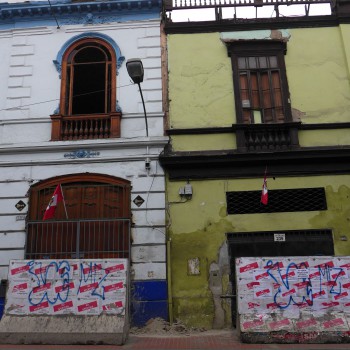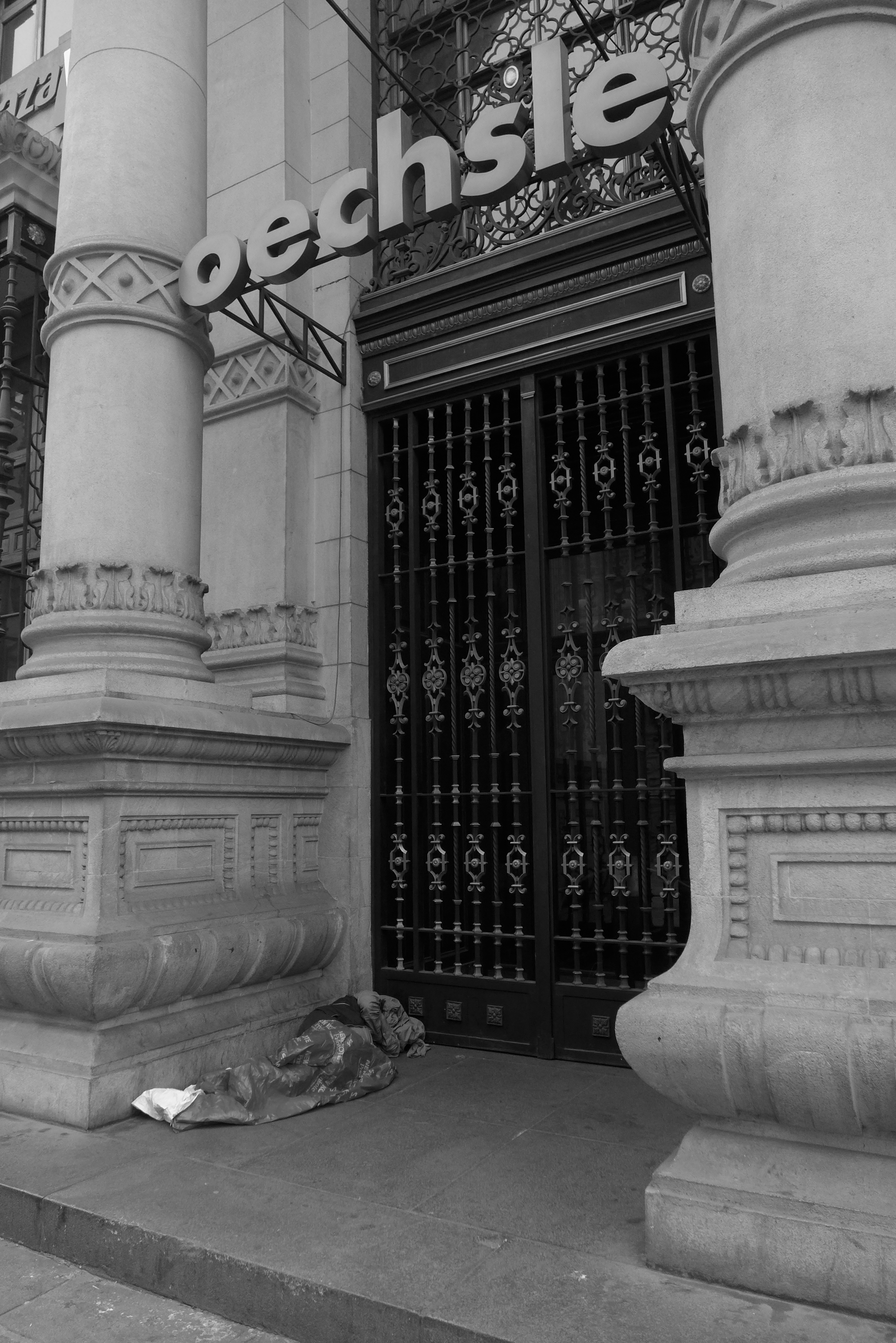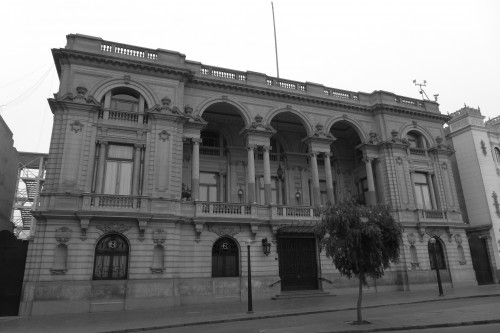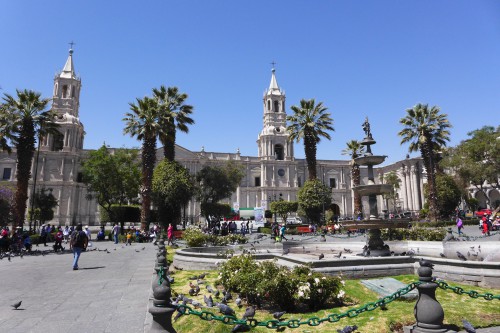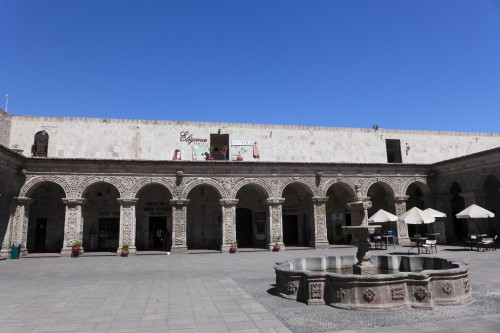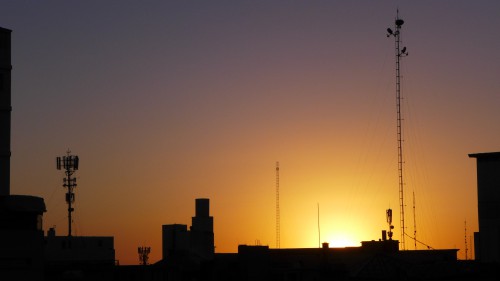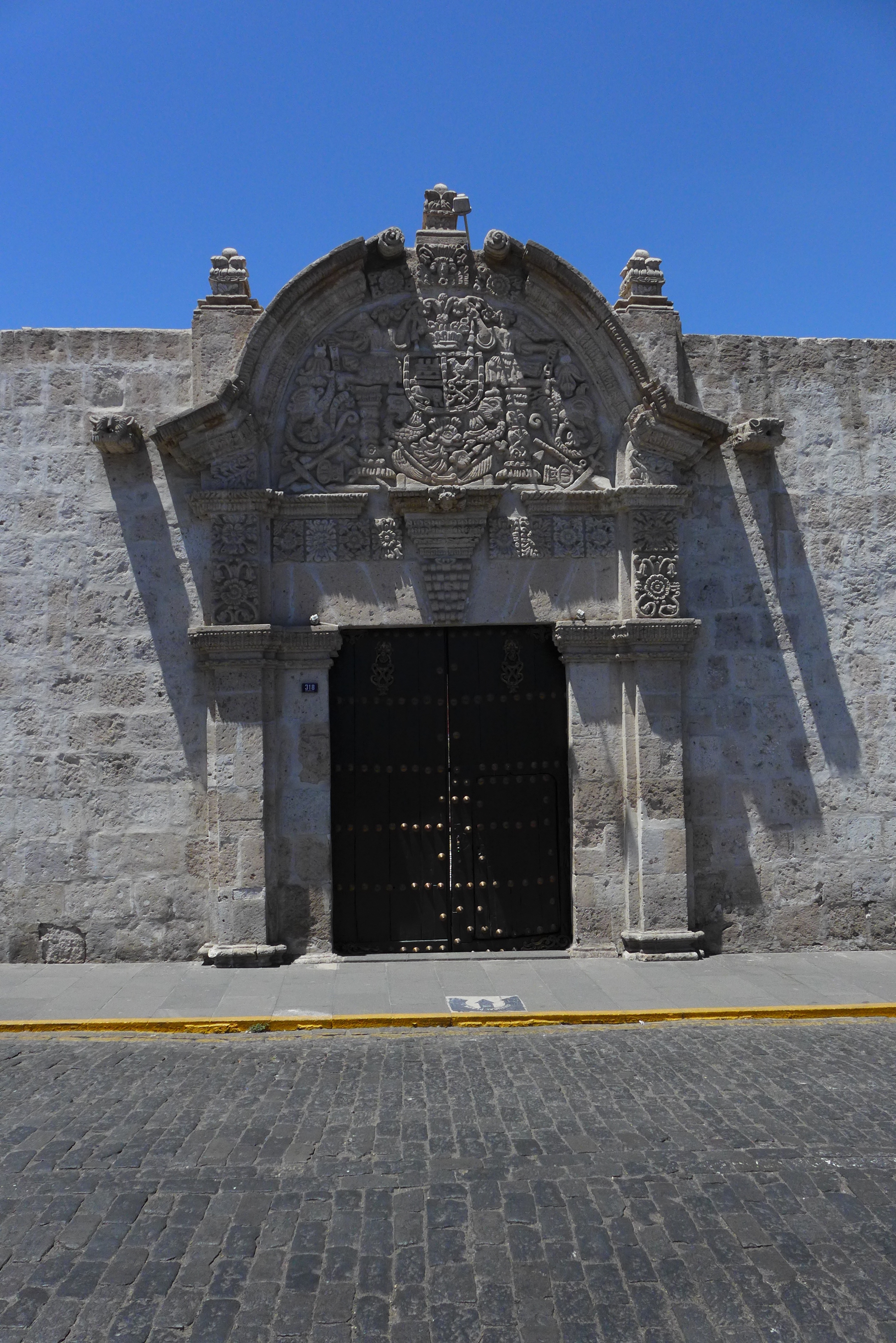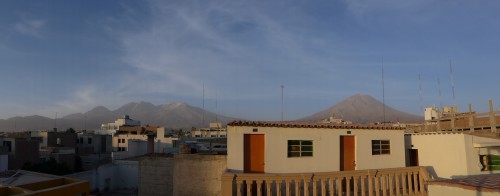What looks like a bus schedule, is just that. One day i said goodbye to paul and sam and made my way to the bus terminal to catch a night bus to lima. I felt i had to decide in-between exploring the southern sierra of peru or to have enough time on my way to patagonia. Once in lima, i just went over to the next bus company, one block up the road and bought a ticket to arequipa. Also an overnight bus, this time the travel time was twice as long. Luckily i could store my bike at the terminal and was so more at ease to explore the capital. Wandering about before the city woke up, i soon reached the plaza de armas in the centre. Just around the corner is the casa de la literatura in the old railway station.
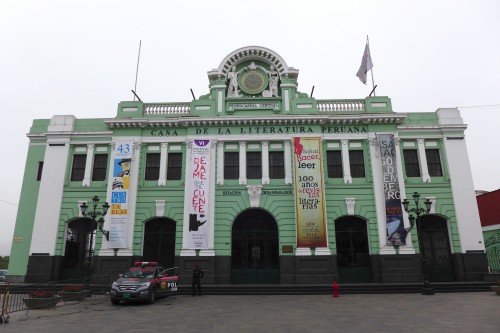 In big cities i like to seek out vegetarian restaurants to get some variety from the usually not too varied menu for vegetarians on the road. A good resource for finding these places is happycow, a website with listings of restaurants in most countries around the globe. On my way to ‘el manatial’ restaurant, i was passing these painted houses and was soaking in what atmosphere big cities have to offer and is hardly found along the dirt roads through the andes.
In big cities i like to seek out vegetarian restaurants to get some variety from the usually not too varied menu for vegetarians on the road. A good resource for finding these places is happycow, a website with listings of restaurants in most countries around the globe. On my way to ‘el manatial’ restaurant, i was passing these painted houses and was soaking in what atmosphere big cities have to offer and is hardly found along the dirt roads through the andes.
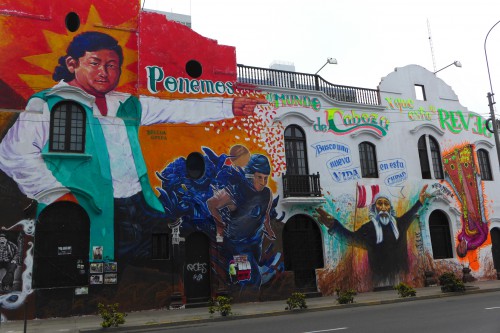 Especially duiring the era of the shining path, numerous campesionos moved to the big city in hope of a better life. They settled on the hills surrounding lima with hardly or no legal status concerning their ¨property¨. Only much later, the land on which they had built their shacks or houses was legalized.
Especially duiring the era of the shining path, numerous campesionos moved to the big city in hope of a better life. They settled on the hills surrounding lima with hardly or no legal status concerning their ¨property¨. Only much later, the land on which they had built their shacks or houses was legalized.
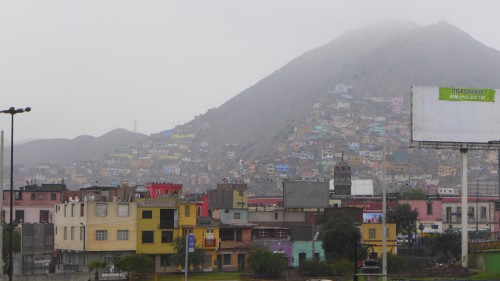 These fotos were taken next to the old city wall of lima with living quaters directly attached to the back side of the wall.
These fotos were taken next to the old city wall of lima with living quaters directly attached to the back side of the wall.
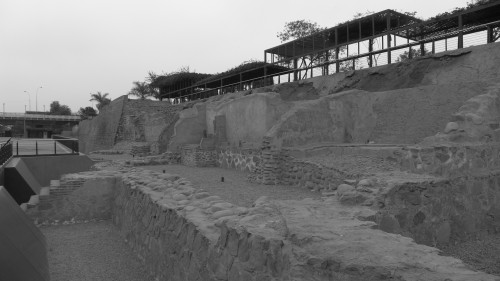 There are quite a few nice buildings surrounding the plaza de armas. I couldn’t quite figure out why some of the doors and entrances had these wall elements in front of them.
There are quite a few nice buildings surrounding the plaza de armas. I couldn’t quite figure out why some of the doors and entrances had these wall elements in front of them.
The clash between the posh and the poor is most stricking in cities and lima is no exception with the homeless sleeping on the main shopping street.
The building of the club nacional de lima next to the teatro colón at the plaza san martin.
After lunch i was somewhat overtaken by tiredness and had a nap at the parque de la exposición, just across the road from the bus terminal. I love the bakeries here in south america, and peru is no exception. You never have to walk far to find one and in some cases like here, they come to you with their small tiendas on wheels.
I had my first small quarrel for a long time at the bus station before departure. I had asked about taking the bike and was told there was no surcharge. But now i was asked to pay the same amount that the ticket for me had cost as an extra for it. There was some running around, a manager showed up, supposedly calling the lady i had purchased the ticket from in the morning, hinting that i was lying, then mentioning some official list which they wanted to fetch but which mysteriously never showed up… in the end i paid a third of what they asked for. Never mind, i had a nice fellow sitting next to me, which was also a good test of how well my spanish was holding up since i had almost exclusively conversed in english with paul and sam for two weeks. That wasn’t enough to forget it all and so i was happy to share a good while of the busride in conversation.
Leaving Lima wasn’t exciting and neither was the landscape during the rest of the day. That had changed when i woke up just before sunrise the next morning as we were cruising along the barren coastline bathed in the morning sun before turning inland around Camana.
After checking into a nice guesthouse, i went for a walk around the white city until the Plaza de Armas.
One of the inner yards of a colonial building. Many house businesses today or official institutions to ensure their upkeep.
Buying joghurt and tons of fruits made for a great dinner which i had with this view from the roof terrace of the hostal.
Arequipa is called the white city because of the stone which was used while constructing most of the historic buildings called sillar, a whitish volcanic stone.
Another view from the roof terrace with the misti volcano on the right.
My route would take me just around it on the old road to puno. Since they build a new one to the east, this meant less traffic and a more adeventurous route towards lago titicaca.
